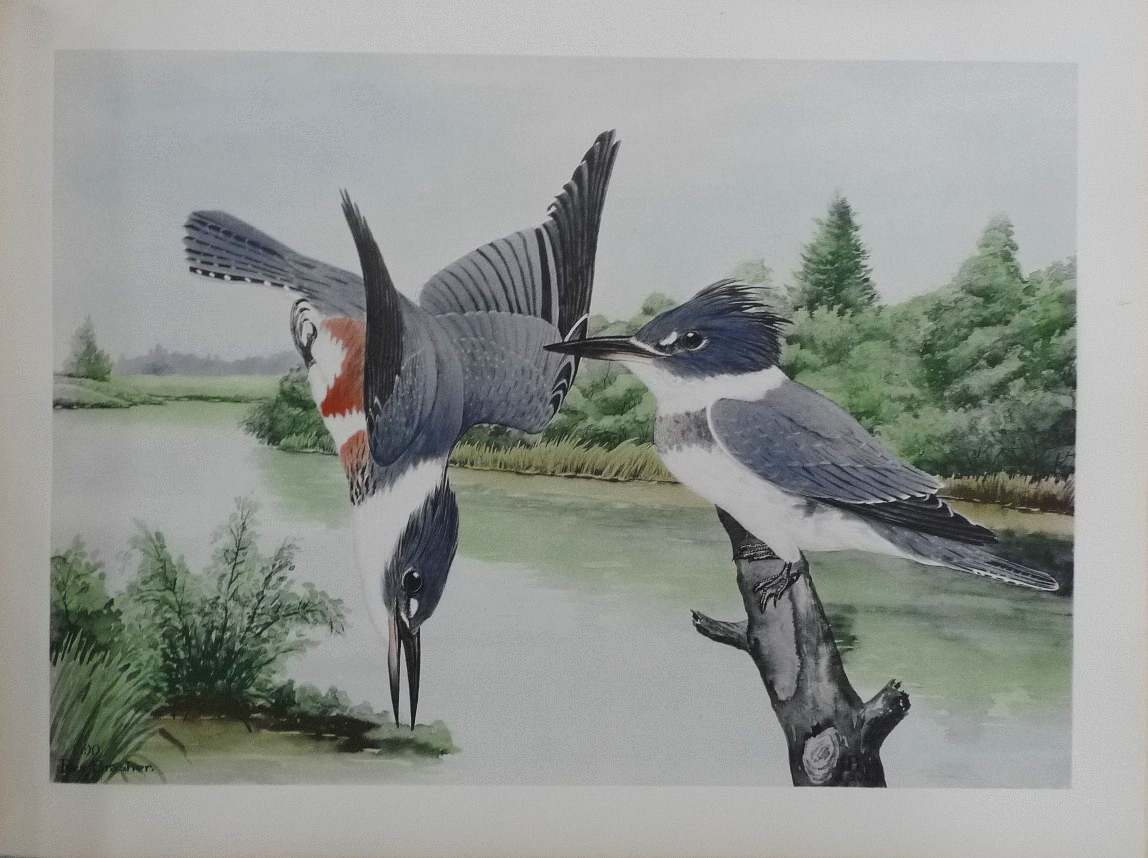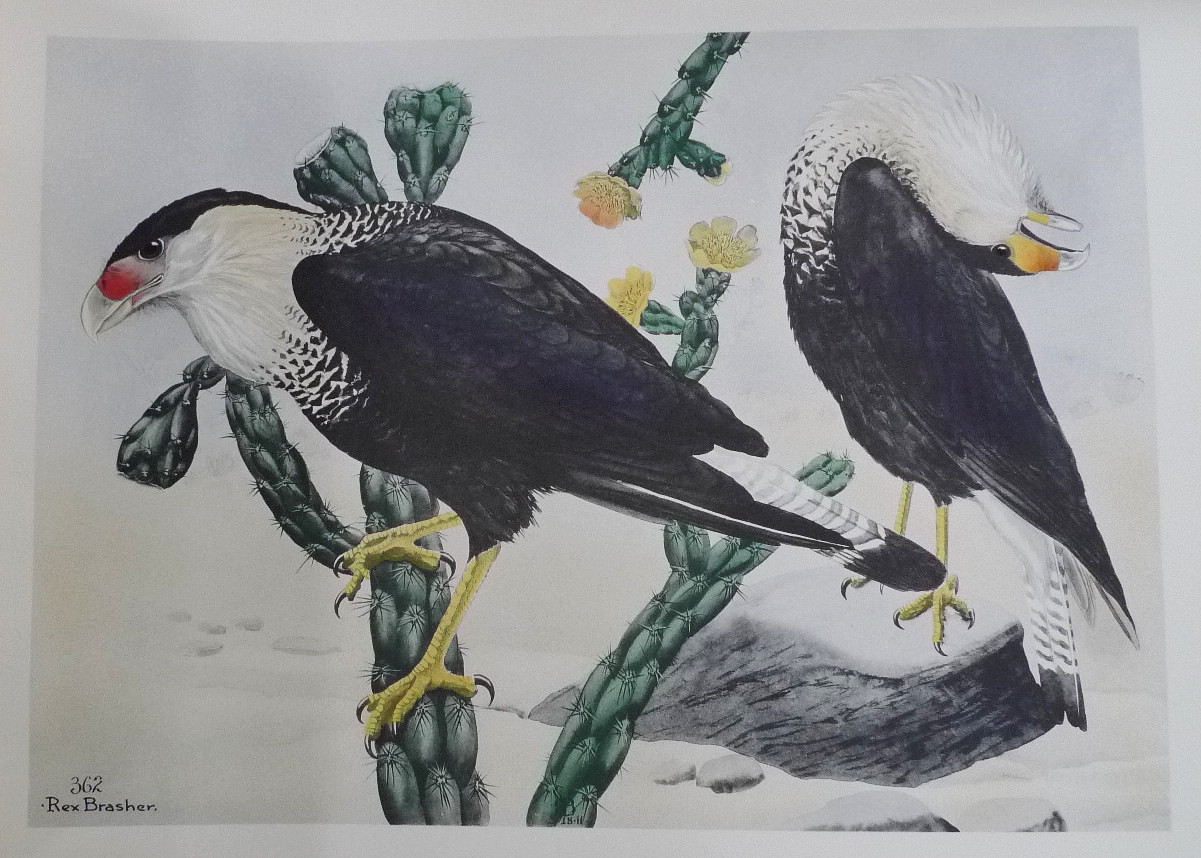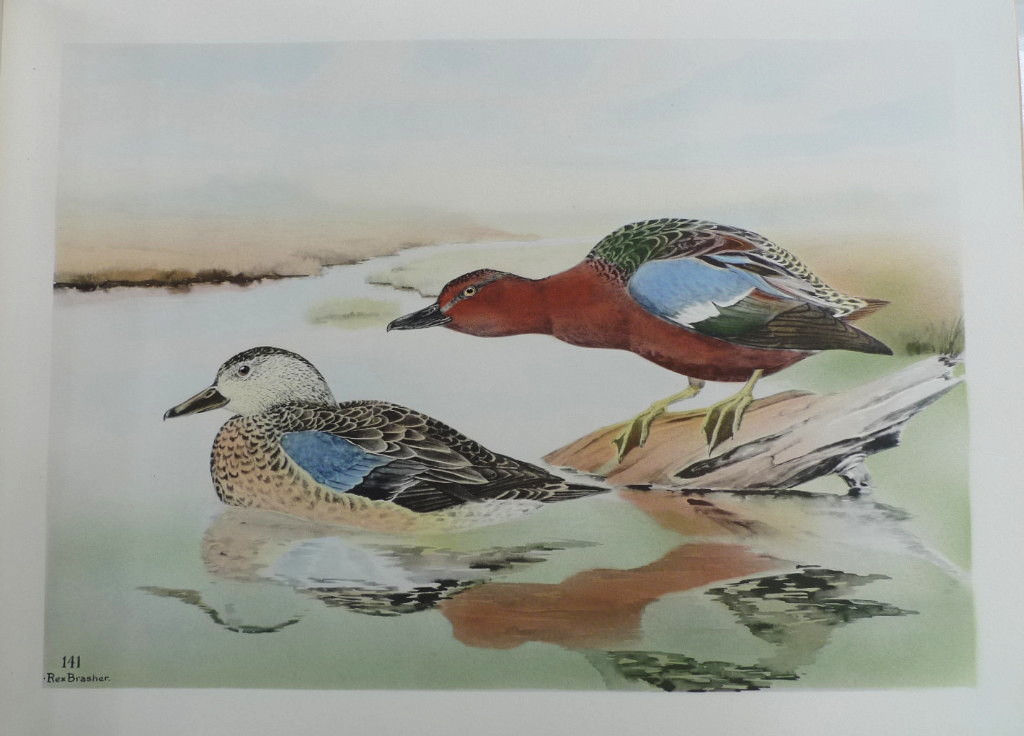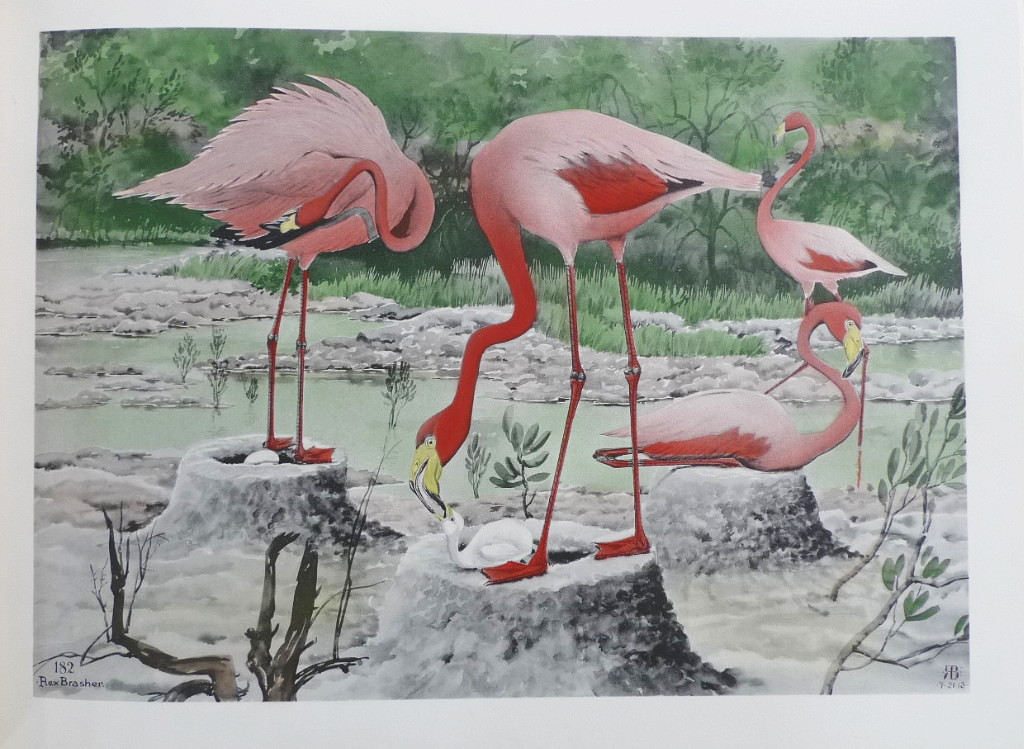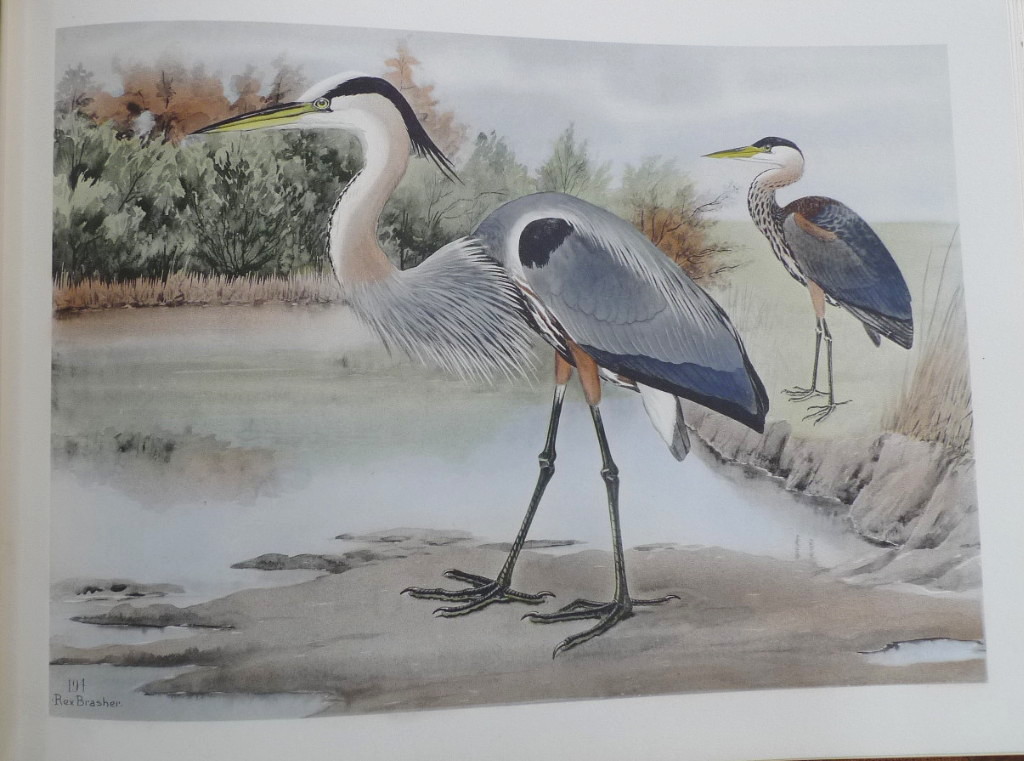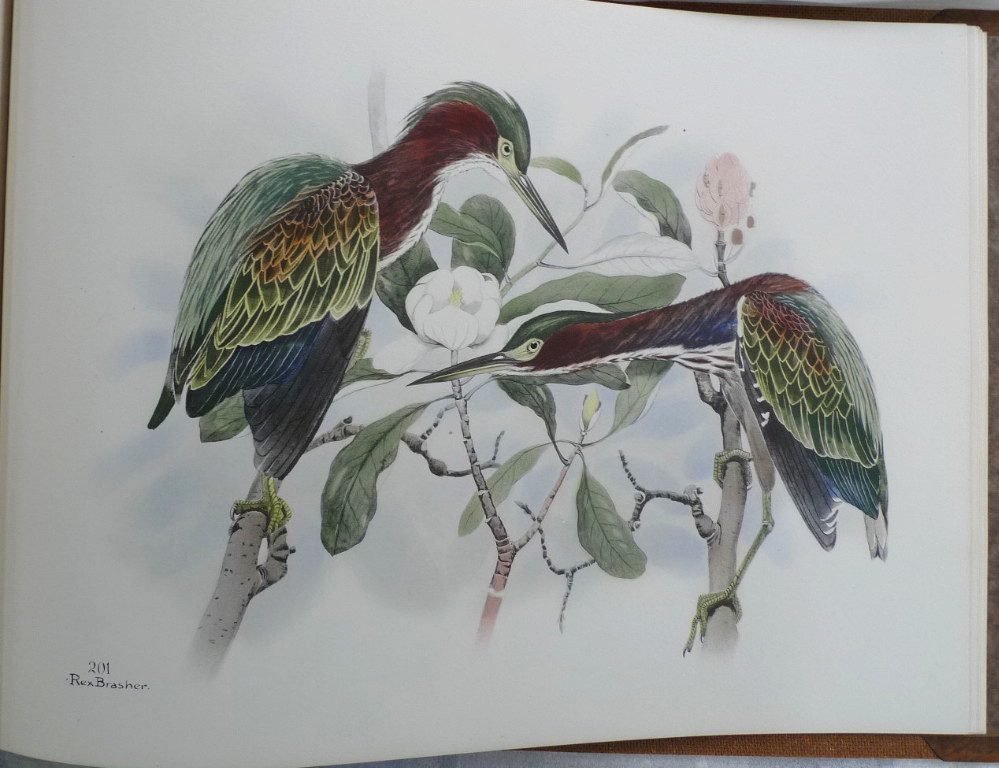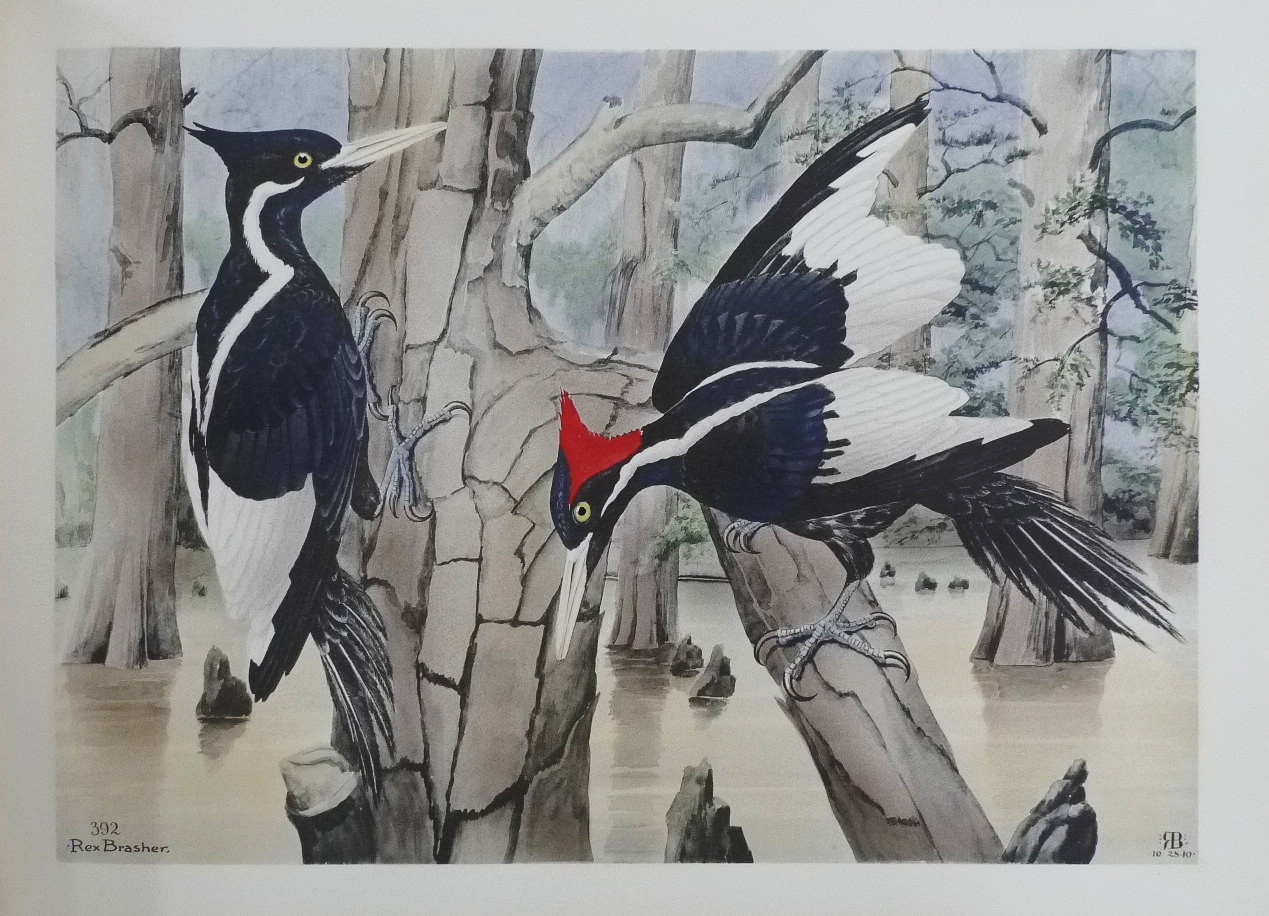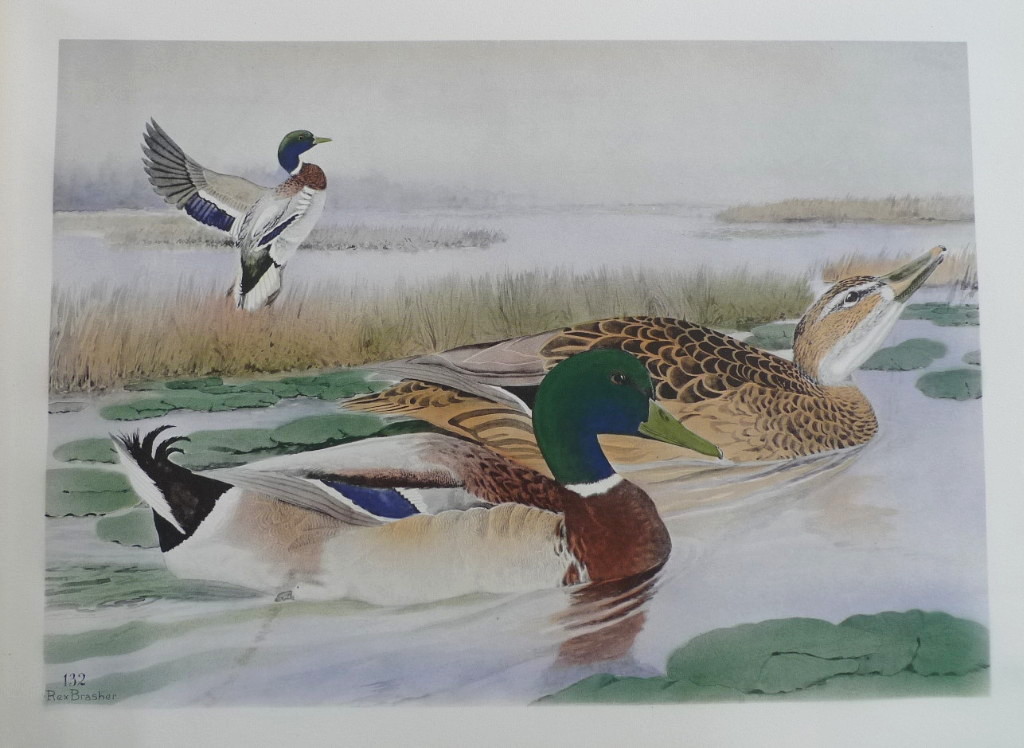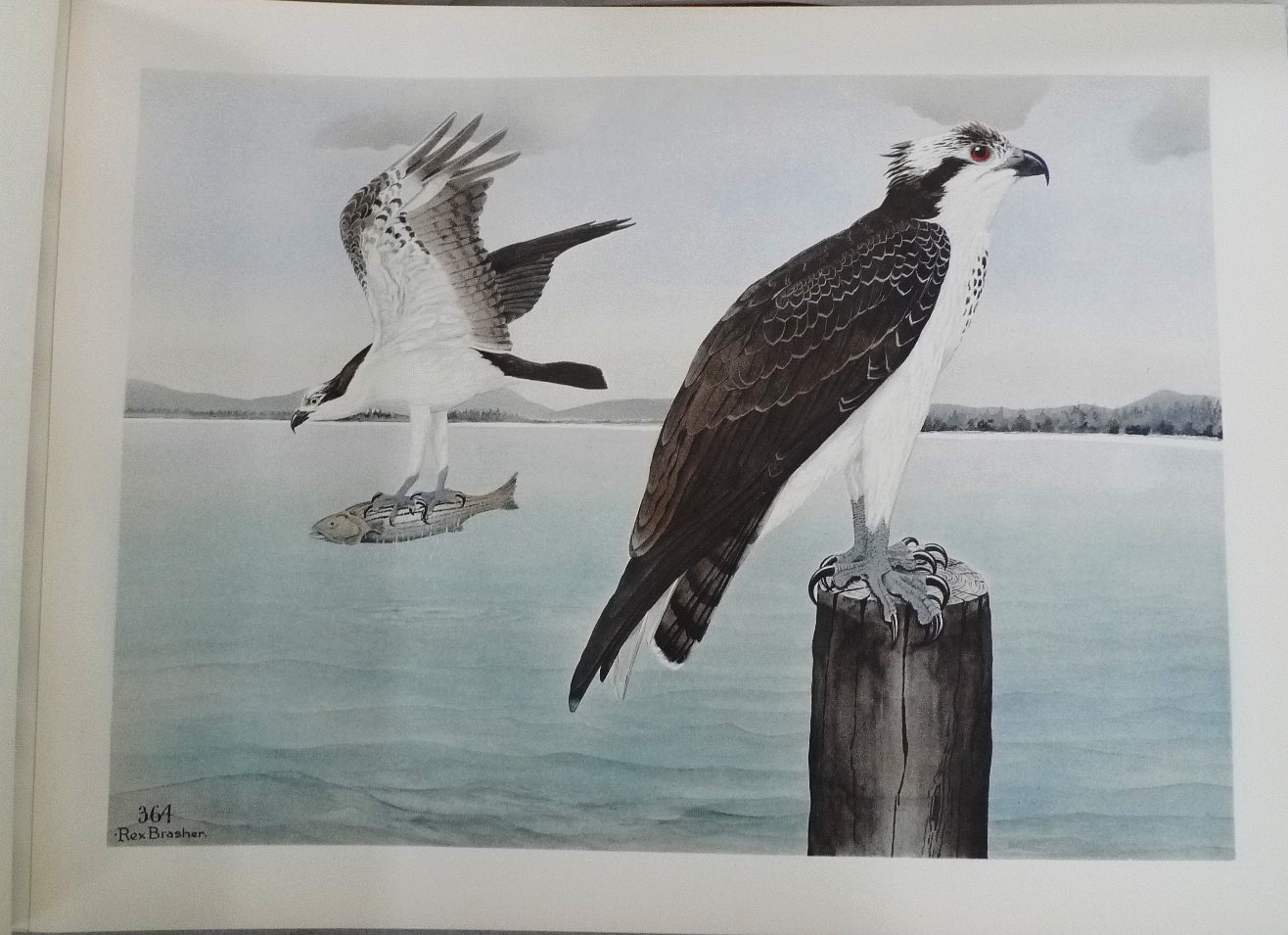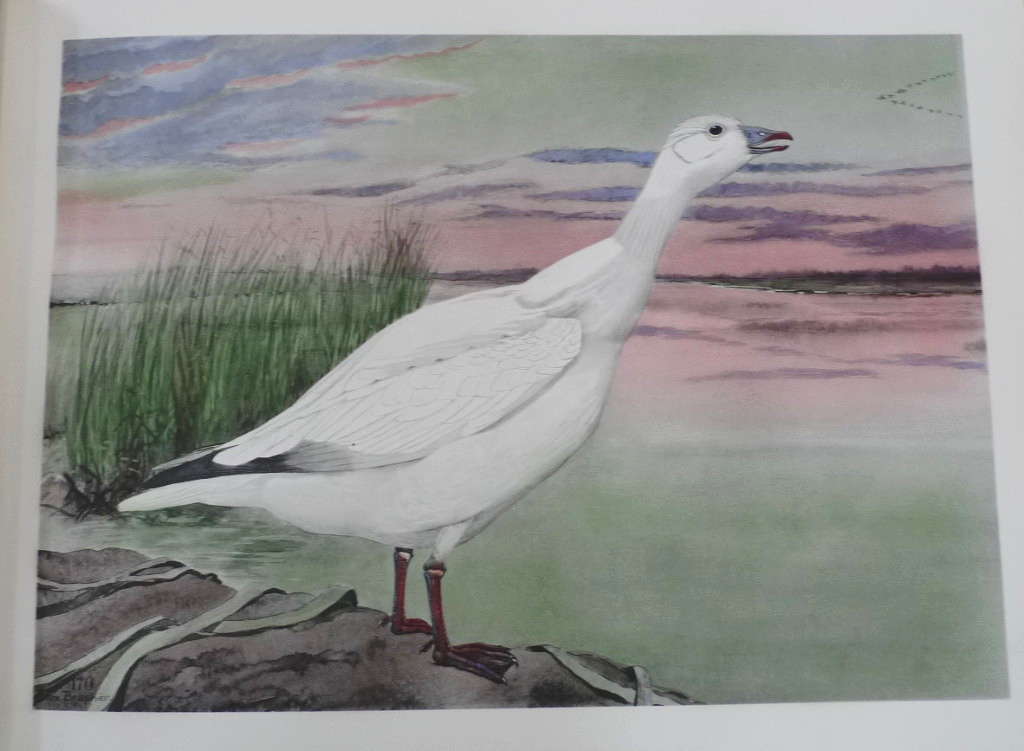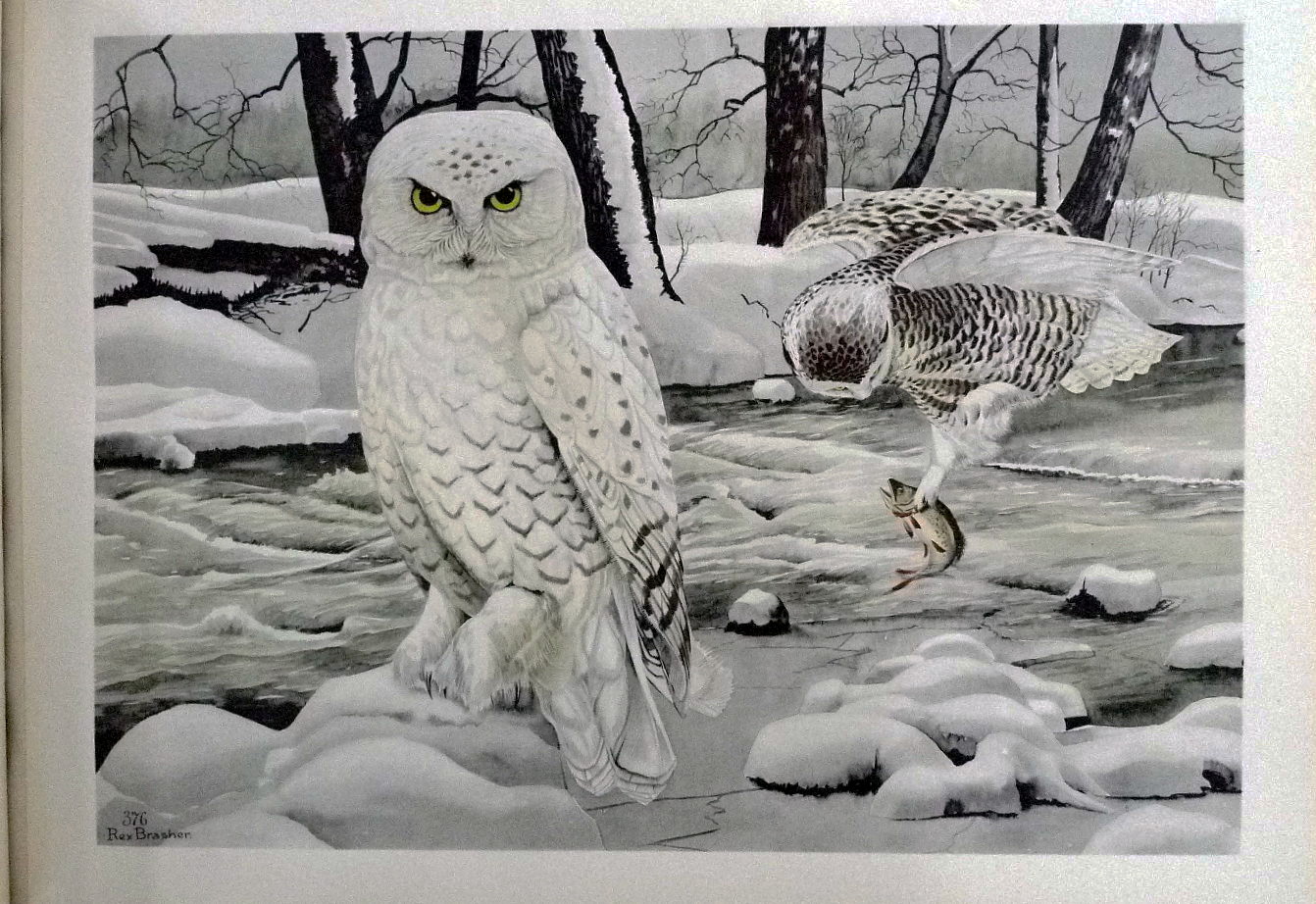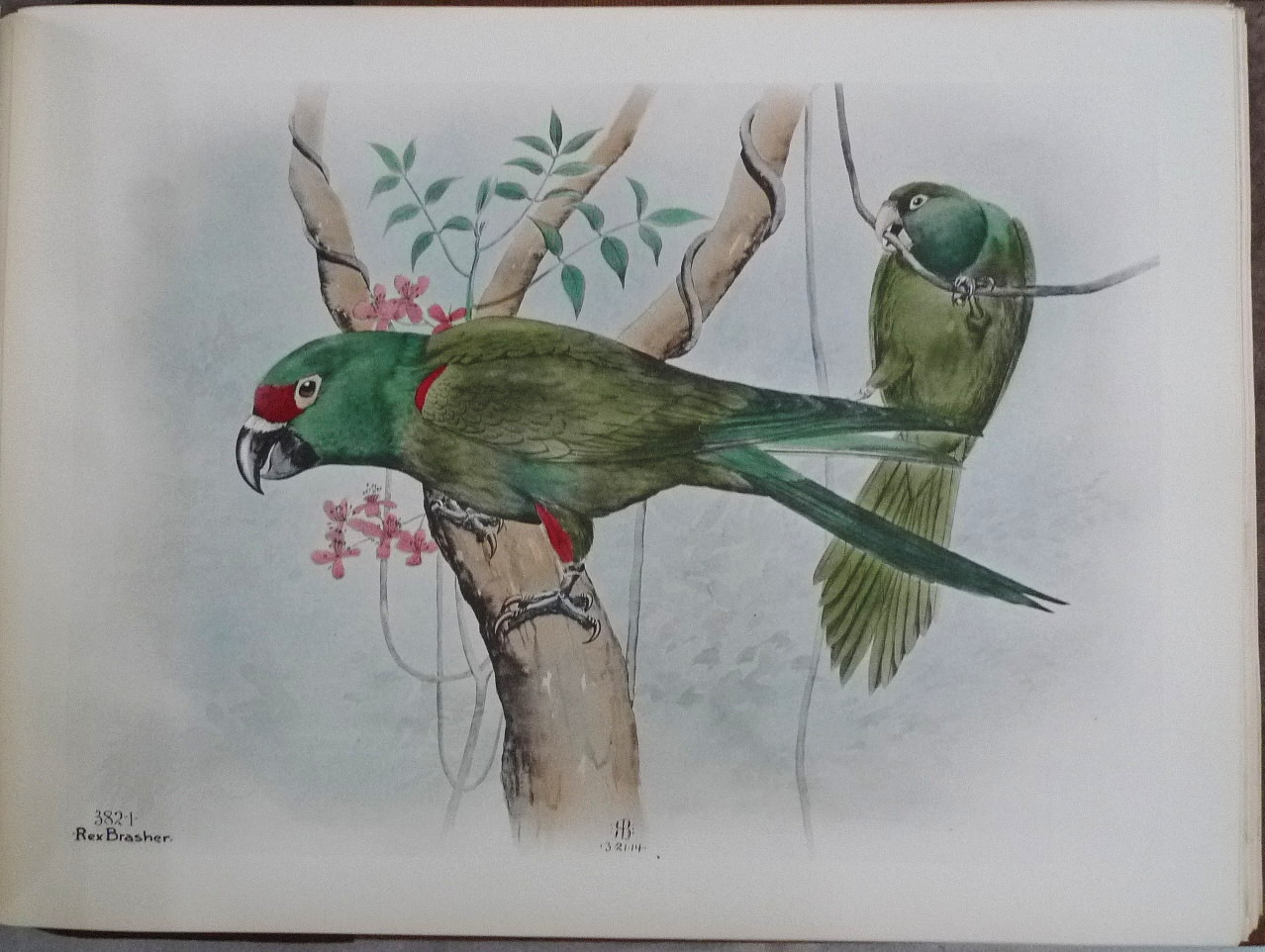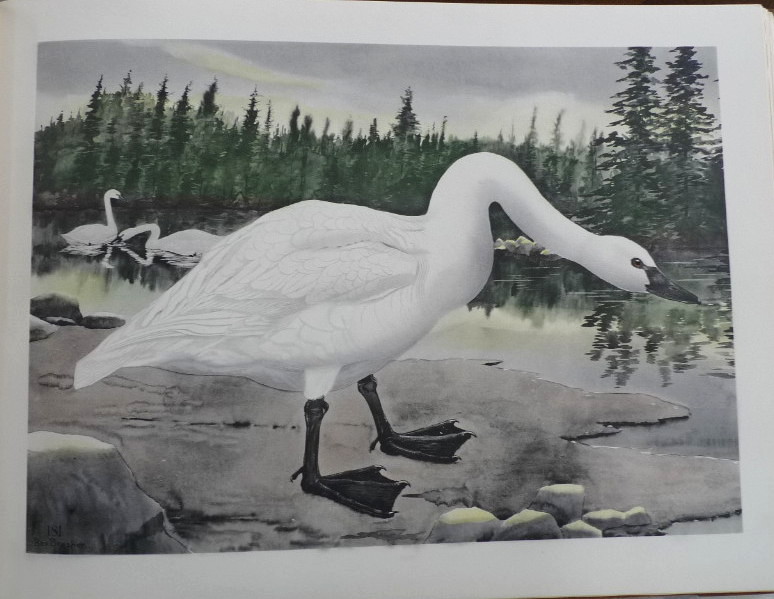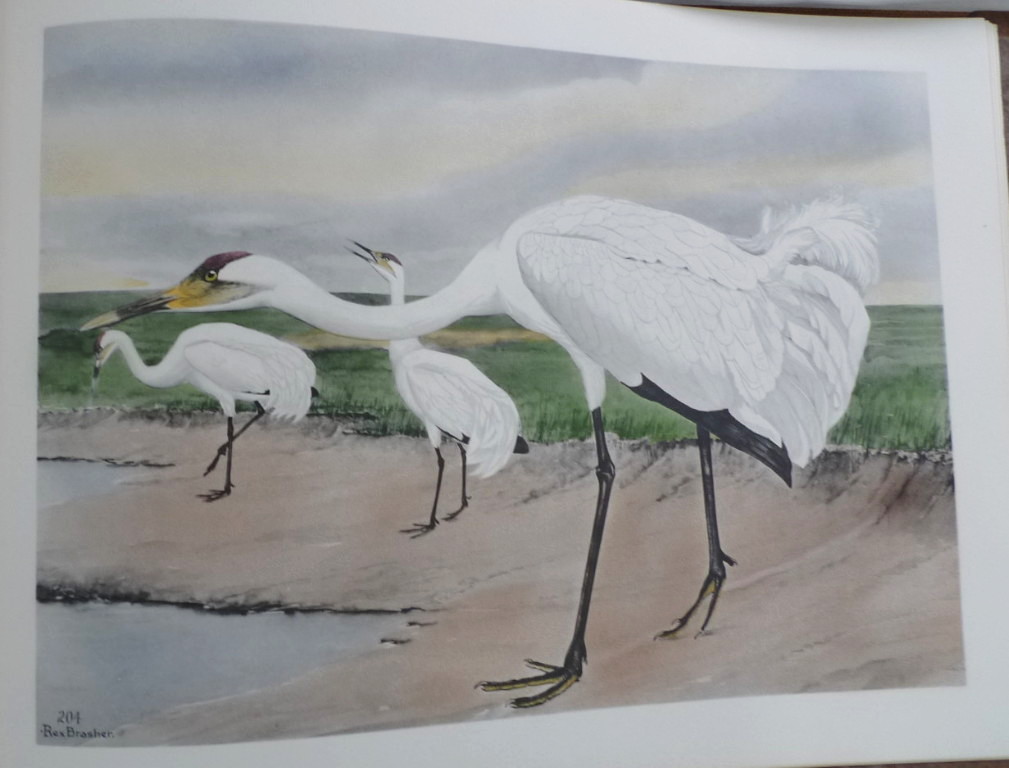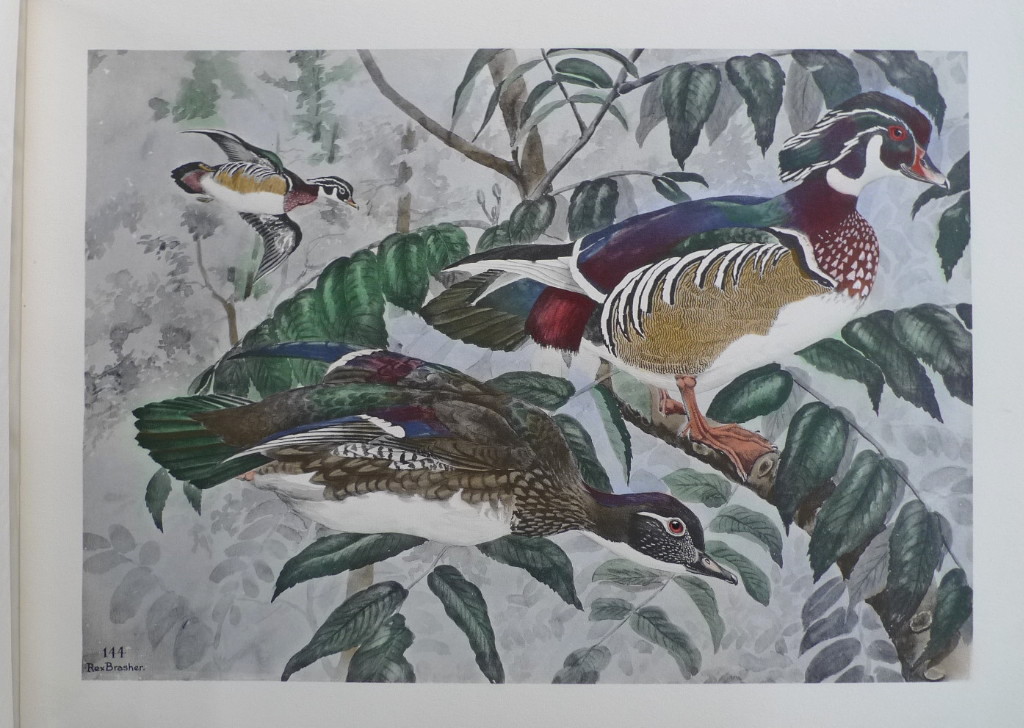Description
Oblong folio measuring around 12 x 17-1/2 inches, 12 volumes with 867 hand-colored plates (mostly collotypes, some offset lithographs). Original half leather over pictorial masonite boards by Brewer Cantelmo Co. Inc. Numbered 28 of 500 in most volumes, but actually 28 of an estimated 110 to 120 actual sets. Volume II title page with variant numbering. Text with numerous vignettes and decorative initials, many hand-colored. Important presentation copy inscribed by Brasher (with an error in the middle initial) in the final volume to then-US senator of Connecticut Frederic C. Walcott “with deep appreciation for his keen interest in Wild Life.” Walcott popularized and passed the 1934 Migratory Bird Hunting Stamp Act (familiarly known as the “Duck Stamp Act”). Overall excellent condition with plates in fine or near fine condition with the leather on the bindings in typical condition for this work.
Rex Brasher (usually pronounced “Bray-zher” by family members) was a Connecticut wildlife artist (1869-1960) who from 1928 to 1932 produced a set of books entitled The Birds and Trees of North America. This very rare and unusual work, comprised of up to 867 plates and accompanying text, is the product from beginning to end of a family-based collaboration revolving around Brasher’s work, personality and life experiences. The plates cover around 1200 species and subspecies of North American birds plus numerous plants. Brasher’s intention — in which he succeeded after almost 50 years of effort — was to paint every bird on the American Ornithological Union’s list of North American birds. Although his driving principle as a painter was comprehensiveness, the end result is a uniquely American odyssey through one man’s life and experience of the natural world.
Printed by the Meriden Gravure Company, the usually single-color plates are often described as photogravures (an intaglio-based method), but are in fact mostly collotypes. Collotype is a lithographic technique that produces high-quality images that under a microscope show a reticulated ink pattern. Because of the time and expense required for the collotype process, it is considered a lost art today, but would have been a premier method for reproducing Brasher’s work and one in which Meriden excelled. The plates were typically printed by Meriden with a single color of ink (usually black) although there are some that include printing in multiple colors. Brasher is credited with hand-coloring his prints using a pochoir process (stencil and airbrush), a monumental task involving the completion of almost 90,000 prints in four years.
Brasher spent a lifetime traveling and painting the birds and plants of North America. A highly colorful personality, he had a deep love of poetry and wildlife that is reflected in the text of this extremely personal work. His niece Marie wrote brief technical descriptions for the plates and collaborated with Brasher to capture his stories on paper. The text is surprising and occasionally includes original or quoted verse, and charming oddities such as hand-painted lettering and vignettes, printed color and even the occasional photo (which results in the presence of a scattering of glossy pages replacing the more typical matte paper stock).
Although the original plan called for 500 sets at a price of $100 per volume ( $1200 for the complete set), the final plan was for 100 sets at $2400 per set. In the end, the goal was met and eventually exceeded with the completion of around 110 to 120 sets. Around half of these have found their way to insititutional collections. Many of the remaining sets have been broken up and sold for plates, lost or damaged. In complete and excellent condition, the work is very rare, moreso than the individual prints or even individual volumes, which Brasher continued to sell in the years following completion of his project.
A family partnership (Rex Brasher Associates) served as publisher for this unusual venture. Brasher’s niece Marie wrote the bird descriptions based on her own research while additional text was based on Rex’s personal stories. Other family members helped with marketing and production, and all worked to hand-assemble the volumes in Brasher’s barn. The work is bound in a custom-made decorated binding, half-leather over hardboard with gilt lettering by the Brewer Cantelmo Company of New York. The 12 x 16 inch sheets are all hinged with a 1-1/4 inch wide strip of punch-holed linen using a post-style binding.
Reflecting its hand-made nature, each set of this work is unique. Although the number of plates vary from set to set, the one offered here (numbered 28 in each volume except Volume 2) includes the maximum number of plates found in the work, and is inscribed by Brasher (with an error in the middle initial) in the final volume to then-US senator of Connecticut Frederic C. Walcott “with deep appreciation for his keen interest in Wild Life.” Walcott was well-known for his conservation activities and for sponsoring and passing the Migratory Bird Hunting Stamp Act (familiarly known as the “Duck Stamp Act”). This 1934 law (based on an idea first popularized by Walcott in a 1921 article) established a permit system to generate revenue for the acquisition of wetlands for the National Wildlife Refuge System. It also has fostered a greater appreciation of bird art through the annual issuance of permits (that is, duck stamps) decorated with waterfowl.
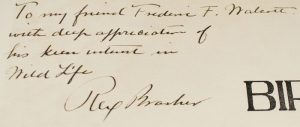
Inscription in pen in Volume XII reads: “To my friend Frederic F. Walcott with deep appreciation for his keen interest in Wild Life. [signed] Rex Brasher
Volume XII also has a collation note in pencil (upper right corner) that reads:
“Collated 867 plates PKRB – BGB 10-7-08”

Limitation is printed as follows on each title page except that in Volume II (bold below indicates hand-written): Edition limited to 500 copies of which this is volume No. 28

Variant in Volume II (with hand corrections in pen to usual printed copy): Edition limited to 100 copies of which this is SET No. 59




